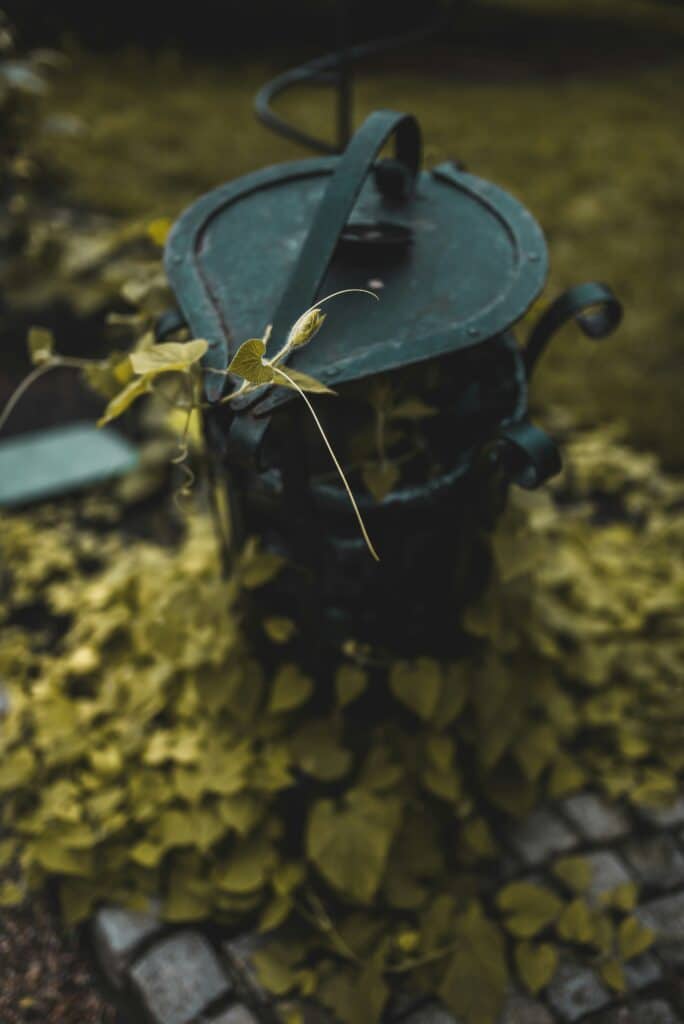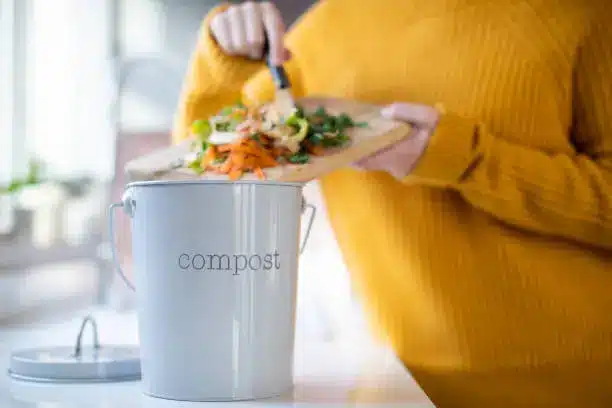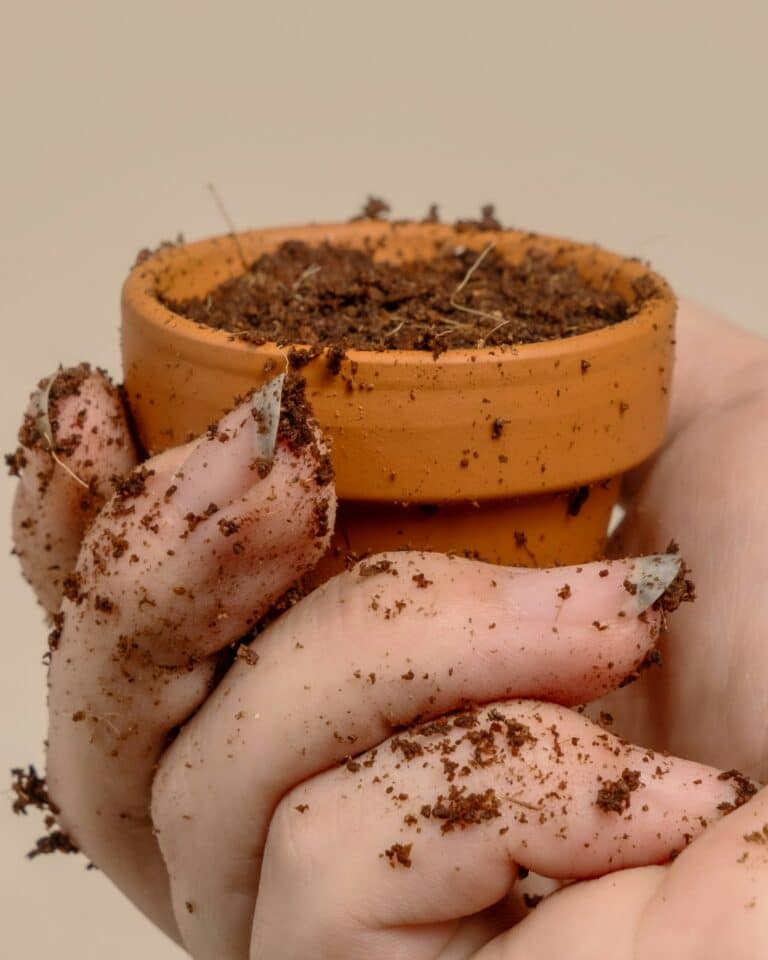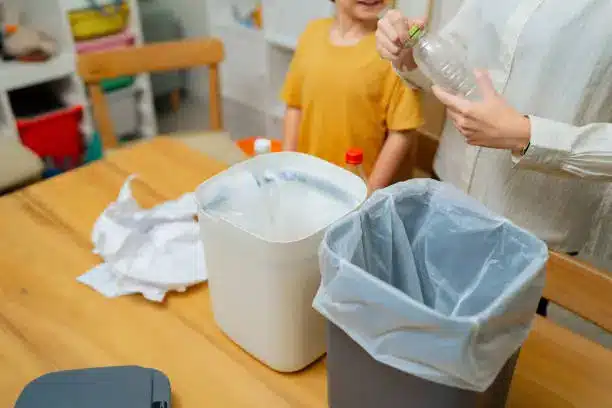That you could convert something as mundane and usually discarded, like coffee grounds or banana peels, into a rich, organic matter that can significantly enhance your garden’s productivity? 🌱 Yes, it’s entirely possible, and this comprehensive guide is here to show you exactly how you can do that.

At first glance, this might sound a bit like alchemy. But, it is, in fact, a thoroughly scientific, eco-friendly, and surprisingly straightforward process. Known as composting, this method of recycling organic waste has been used for centuries as a natural fertilizer, enriching the soil and promoting healthier plant growth. In this context, the term “Plant Gold” is an apt descriptor for the nutrient-rich compost that can be derived from our everyday waste.
The primary goal of this article is to transform your perspective on food waste, from viewing it as an issue to be managed to recognizing it as a valuable resource that can contribute to a more sustainable, circular economy.🔄 Indeed, composting is not just beneficial for your plants; it’s also a major contributor to reducing the negative environmental impacts of landfill waste.
What’s In Store for You?
Expect a thorough exploration of composting, the magic of turning trash into treasure, in the course of this article. We will start by understanding the science behind composting, breaking down its technical aspects into digestible information. The goal is to help you understand why composting works, its benefits, and the role it plays in creating healthier soils and more productive gardens.
We will also delve into the practical aspects of composting, providing you with a step-by-step guide on how to start your composting journey right in your kitchen or backyard. From choosing the right compost bin, understanding the “green” and “brown” components of compost, to troubleshooting common composting problems, we’ve got you covered.✅
Additionally, we’ll present some innovative composting techniques for those of you who may be dealing with constraints like limited space or strict housing regulations. With the right knowledge and a little creativity, composting can be adapted to various situations and lifestyles.
Who Can Benefit from This Guide?
This guide is designed to be useful for a wide range of readers. Are you a seasoned gardener looking to improve your soil quality and plant yield naturally?🌻 Or perhaps you’re a beginner green thumb interested in sustainable gardening practices? Or maybe you’re simply someone looking to reduce your ecological footprint and contribute positively to environmental conservation? If you’ve answered yes to any of these, then this guide is for you.
But even if you do not fall into these categories, don’t hesitate to delve into this article. The information and practices outlined here can have broader applications beyond gardening. They can contribute to a shift towards more sustainable living practices, a change that is increasingly necessary in our current global context.
So, prepare to embark on an exciting journey of transformation, from trash to treasure, from waste to wonder, as we explore the world of composting. Are you ready to turn your food scraps into “Plant Gold”? 💚 Let’s dive right in!
The Art of Transforming Food Scraps Into Plant Gold: An Introduction
When it comes to waste management, one man’s trash is truly another man’s treasure. Food waste is no exception. In fact, transforming food scraps into ‘plant gold’ or compost is not only environmentally friendly but also a boon to gardeners and farmers alike. In this comprehensive guide, we will delve into the science behind composting, and provide a step-by-step guide to creating your own backyard compost pile. Before diving in, check out this informative YouTube video “Composting 101: The Complete Guide to Composting At Home” by Epic Gardening for an overview of the process.
Understanding the Science of Composting
Composting is a natural process that transforms organic waste into nutrient-rich soil conditioner. It is the work of countless microorganisms, including bacteria, fungi, and other decomposers, which break down organic matter into simpler substances. The end result, compost, is rich in nutrients and ideal for promoting plant growth.
The process of composting can be categorized into four stages: mesophilic, thermophilic, cooling, and maturation. Each stage has a unique temperature range, microbial community, and decomposition process. For instance, the thermophilic stage is characterized by temperatures between 50-70°C, and is primarily driven by heat-loving bacteria.
While the science of composting may seem complex, the practical application is surprisingly straightforward. To create compost, all you need is organic waste (e.g., food scraps), a suitable location, and a bit of patience. In the following sections, we will guide you through the practical aspects of composting, including what to compost, where to compost, and how to maintain your compost pile.
What Can You Compost?
Composting is a versatile process that can accommodate a wide range of organic waste. This includes vegetable peels, fruit rinds, coffee grounds, eggshells, grass clippings, leaves, and more. However, not all food scraps are suitable for composting. Meat, dairy products, and diseased plants can attract pests and create unpleasant odors, so it’s best to exclude them from your compost pile.
To help you understand what can and cannot be composted, we have created a simple table:
| Compostable | Not Compostable |
|---|---|
| Vegetable peels | Meat |
| Fruit rinds | Dairy products |
| Coffee grounds | Diseased plants |
Remember, composting is a dynamic process that depends on a balanced diet of ‘greens’ and ‘browns’. Greens, like vegetable peels and grass clippings, are rich in nitrogen, while browns, like leaves and straw, are high in carbon. For successful composting, aim for a 3:1 ratio of browns to greens. To learn more about this crucial balance, watch the YouTube video “Compost Ratio Explained: Browns & Greens” by The Rusted Garden.
Setting Up Your Compost Pile
Choosing the right location for your compost pile is essential. It should be easily accessible, yet tucked away to avoid becoming an eyesore. It should also be close to a water source, as composting requires a certain level of moisture.
A compost pile can be as simple as a heap of organic waste in a quiet corner of your yard, or as sophisticated as a manufactured compost bin. Whichever you choose, ensure there is adequate aeration and moisture. This helps speed up the decomposition process and maintain the health of the microbial community. The pile should be turned regularly to incorporate fresh air and redistribute moisture and heat.
The initial setup of your compost pile involves layering browns and greens in an alternating pattern. Begin with a thick layer of browns at the bottom, followed by a thinner layer of greens, and continue this pattern until the pile is about 3 feet high. Over time, the pile will shrink as the materials decompose, so don’t worry if it seems too big at first.
Compost Maintenance and Troubleshooting
Maintaining your compost pile involves regular turning, watering, and monitoring. Turning the compost pile once a week can help aerate the pile and speed up the decomposition process. Watering is necessary to maintain the right level of moisture; the compost pile should be as damp as a wrung-out sponge. Lastly, monitoring the temperature and smell of your compost pile can give you insights into the composting process and help you identify any potential issues.
Common composting issues include unpleasant odors, pests, and a slow decomposition process. Unpleasant odors are usually due to an imbalance of greens and browns, or a lack of aeration. By adjusting the ratio of greens to browns, or turning the pile more frequently, you can eliminate the odors. Pests can be deterred by keeping a lid on your compost bin, or by burying food scraps deep within the pile. Lastly, a slow decomposition process can be remedied by adding more greens, turning the pile more frequently, or chopping the materials into smaller pieces.
Composting is a rewarding process that can transform food scraps into ‘plant gold’. Whether you’re a gardening enthusiast or simply seeking to reduce your waste, composting offers an effective and environmentally friendly solution. So, why not give it a try? The planet will thank you, and so will your plants!
Conclusion
In conclusion, it’s clear that the technical world of IT and engineering is vast and varied, with countless potential challenges and opportunities. Whether it’s understanding the complexities of software development, grappling with data analysis, or navigating the ever-changing landscape of network security, there’s always more to learn. This article has aimed to provide a comprehensive yet understandable introduction to some of these key areas, hopefully providing you with a stronger foundation from which to explore further.
We began by looking at the importance of software development and the role it plays in the world today. From the intricacies of coding and programming languages to the considerations of user experience and interface design, it’s a field that combines logical problem-solving with creativity and innovation. 🖥️💡
Next, we delved into the world of data analysis, discussing its pivotal role in helping businesses make informed decisions. By gathering, interpreting, and visualizing data, analysts can provide valuable insights that drive strategic direction and improve operational efficiency. 📊📈
Finally, we explored the critical realm of network security, discussing the various threats that exist and the measures that can be taken to protect against them. From firewalls and encryption to user education and policy development, it’s clear that a multi-faceted approach is necessary in today’s digital age. 🔒🌐
We hope that this article has not only broadened your knowledge but also sparked your curiosity and passion for these fascinating fields. These areas are continually evolving, and staying informed is key to success. We encourage you to delve deeper, whether through further reading, practical application, or joining discussions within the community.
Remember, the technical world is not a solitary one. There is a vibrant, global community of professionals and enthusiasts who share your interest. We encourage you to engage with this community, whether through comments below, sharing this article with your network, or even starting a conversation of your own. We all have something to learn from each other, and your input is invaluable. 💬🌍
As always, we appreciate your feedback and are here to answer any questions or concerns you may have. Please feel free to reach out to us at any time. 🙋♂️🙋♀️
The future is here, and it’s more technical than ever. Let’s embrace it together.
Thank you for reading! 🙏📘
[Reference: IBM Software Development, SAS Data Visualization, Cisco Network Security]
[Tags: #SoftwareDevelopment, #DataAnalysis, #NetworkSecurity]
Please note: Your comments will be moderated according to our comment policy.



